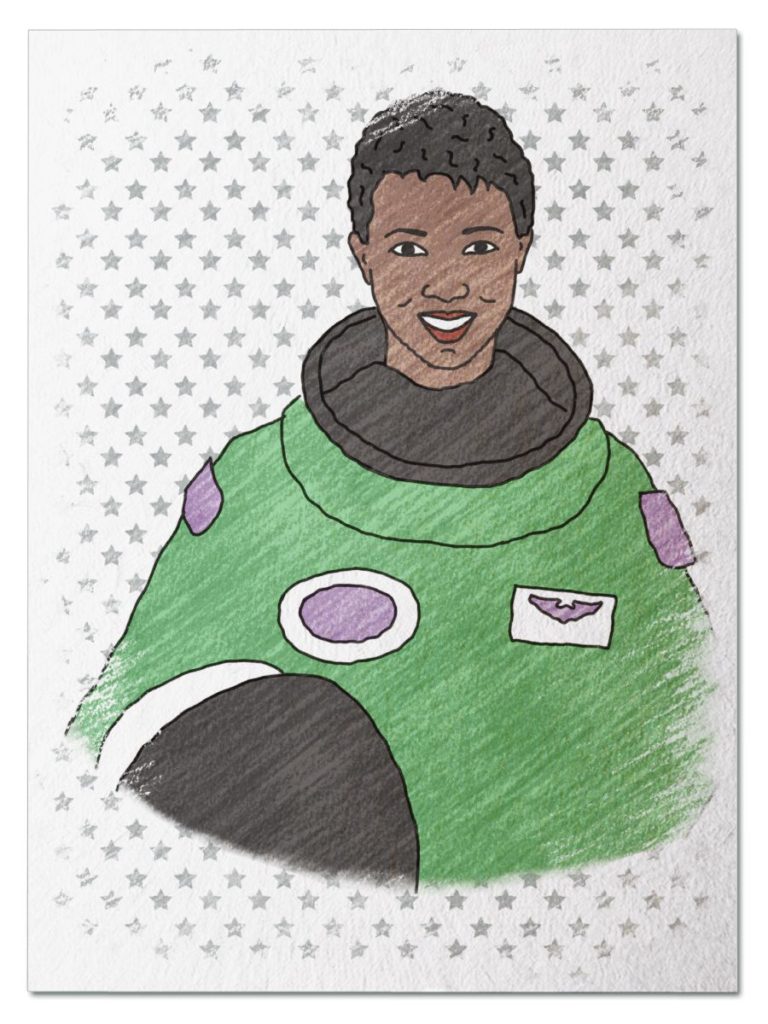
Audacious Adventurer
As a young girl, her family encouraged her to be curious about the world and broaden her horizons through reading books. Then she watched Apollo 11 land on the moon when she was 13 years old and knew she was looking at her dream job. After becoming a doctor and serving in the Peace Corps, she decided to follow her childhood dream and become an astronaut. Blast off with Mae Jemison in 1992 as she becomes the first Black woman in space…
Her Ruby Shoe Moment
The Power of the Wand
Her Yellow Brick Road
Brains, Heart & Courage
Glinda’s Gallery
Just the Facts
Her Ruby Shoe Moment
Mae Jemison was in awe as she looked down at earth from the Endeavor space shuttle. Part of her couldn’t believe that she finally achieved her childhood dream of becoming an astronaut. It was September 12, 1992 and Mae was officially the first Black woman to travel into space.
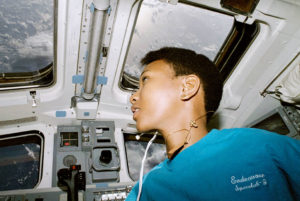
Mae Jemison on board the Endeavor (NASA)
Mae was on board the Endeavor with 6 other crew members, including a Japanese astronaut. The Endeavor carried the STS-47 Spacelab-J laboratory, which was a joint venture between NASA and the National Space Development Agency of Japan. The purpose of the mission was to conduct 44 science experiments while orbiting the Earth, covering a wide range of topics in both materials science and life sciences.
With respect to materials science, the experiments covered topics from biotechnology to electronics to fluid dynamics. The crew connected microgravity experiments on various substances, including protein crystals, bubbles and liquid drops. In addition, the crew took advantage of the weightlessness in space to develop new materials, such as ceramics, glass, and metal alloys.
 In the life sciences, most experiments were designed to test how gravity (or lack thereof) influenced planet and animal cells. For example, the crew conducted experiments on fish and the impact of weightlessness on their vestibular systems. In addition, the crew monitored the development of frog and chicken eggs in space, to better understand how gravity affects embryo development. Finally, there were a number of experiments designed to measure the impact of space travel on human health.
In the life sciences, most experiments were designed to test how gravity (or lack thereof) influenced planet and animal cells. For example, the crew conducted experiments on fish and the impact of weightlessness on their vestibular systems. In addition, the crew monitored the development of frog and chicken eggs in space, to better understand how gravity affects embryo development. Finally, there were a number of experiments designed to measure the impact of space travel on human health.
Mae had been selected as Mission Specialist for the STS-47 Spacelab-J over three years earlier. Her job was to conduct scientific experiments on the crew while they were in space. Specifically, she studied the effects of motion sickness and weightlessness on the crew and measured changes in bone density and muscle mass. In fact, she was a co-investigator for two experiments about the impact of space travel on bone cells.
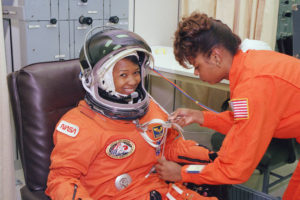 The Endeavor made 126 orbits around earth before returning to the Kennedy Space Center eight days later, on September 20, 1992. In total, Mae spent 190 hours, 30 minutes and 23 seconds in space.
The Endeavor made 126 orbits around earth before returning to the Kennedy Space Center eight days later, on September 20, 1992. In total, Mae spent 190 hours, 30 minutes and 23 seconds in space.
Mae felt honored to be the first Black woman to travel in space. But she didn’t want to be the only one. She wanted to pave the way for others and was convinced that many other women and minorities can contribute if they are just given the chance — “More women should demand to be involved. It’s our right. This is one area where we can get in on the ground floor and possibly help to direct where space exploration will go in the future.”
The Power of the Wand
Mae Jemison resigned from NASA shortly after her mission. Since then, she has been an entrepreneur, consultant, professor, and advocate for social change. She also founded The Earth We Share, a science camp for teens. Mae currently leads the 100 Year Starship Project, which will “assure the capabilities exist for human travel beyond our solar system to another star within the next 100 years.”
Her Yellow Brick Road
Mae attended medical school at Cornell University Medical College and decided to focus on international medicine. As a result, she extensively while in medical school and participated in various projects, including medical studies in Cuba and Kenya. She also volunteered at a Cambodia refugee camp in Thailand for one summer.
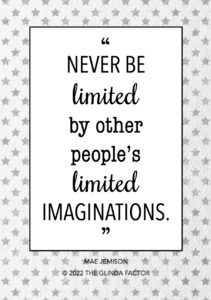 After graduating from medical school in 1981, Mae volunteered for the Peace Corps and served in Africa for over 2 years. She was the Area Peace Corps Medical Officer in both Sierra Leone and Liberia and had a wide range of responsibilities. She oversaw the health care system for all Peace Corp volunteers and US Embassy personnel. She supervised the pharmacy, laboratory, and medical staff. She created and managed training programs for volunteers, and she conducted research experiments on the Hepatitis B vaccine and rabies.
After graduating from medical school in 1981, Mae volunteered for the Peace Corps and served in Africa for over 2 years. She was the Area Peace Corps Medical Officer in both Sierra Leone and Liberia and had a wide range of responsibilities. She oversaw the health care system for all Peace Corp volunteers and US Embassy personnel. She supervised the pharmacy, laboratory, and medical staff. She created and managed training programs for volunteers, and she conducted research experiments on the Hepatitis B vaccine and rabies.
After serving in the Peace Corps, Mae decided to follow her childhood dream to become an astronaut. She was also inspired when she watched Sally Ride become the first woman in space in 1983. So she applied to NASA. Unfortunately, she applied shortly after the Challenger disaster and NASA had paused its astronaut training program. But Mae refused to give up. So she applied again the next year.
On June 4, 1987, Mae was accepted into the NASA Astronaut Group 12 — only 15 candidates were chosen out of 2,000 applicants. Mae became the first Black woman to be admitted to NASA’s astronaut training program. As part of her training, she spent a year in Texas learning about space exploration. Then, she was stationed at the Kennedy Space Center in Florida. While waiting for a mission, Mae worked on launch support activities as well as various projects at the Shuttle Avionics Integration Laboratory.
Brains, Heart & Courage
Mae was born in Alabama, but grew up in Chicago with two older siblings. Her parents moved the family to Chicago when Mae was a little girl, in search of better educational opportunities for their children. Her mom was a schoolteacher and encouraged Mae’s interest in science.
Mae was a curious child with a lot of energy — she channeled her energy into dance and satisfied her curiosity by reading books. She spent hours and hours in the library, exploring different areas of science. She loved all areas of science, including anthropology, archeology, and astronomy.
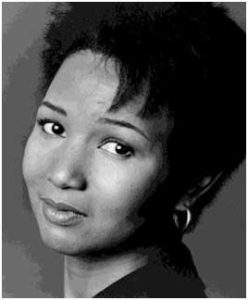 Mae also loved science fiction. Once of her favorite books was A Wrinkle in Time, by Madeline L’Engle, in part because its characters included strong girls and women. She was also a huge Star Trek fan.
Mae also loved science fiction. Once of her favorite books was A Wrinkle in Time, by Madeline L’Engle, in part because its characters included strong girls and women. She was also a huge Star Trek fan.
When Mae was 13 years old, she watched television coverage of the Apollo landing on the moon. And she was totally mesmerized. From that moment forward, her ultimate dream job was to become an astronaut.
Mae was an honors student in high school and participated in dance, theater, and student government. She graduated early, at age 16. At the time, she planned to go into biomedical engineering. Mae was admitted to Stanford University and earned a National Achievement Scholarship to help pay the tuition.
While at Stanford, Mae was president of the Black Student Union and involved in various theater productions. Her favorite was Out of the Shadows, a play that highlighted the African American experience. She also learned 3 languages — Russian, Swahili and Japanese. In 1977, Mae graduated from Stanford with degrees in chemical engineering and African American studies. Then, she decided to go to medical school.
Glinda’s Gallery
Just the Facts
- Mae was born on October 17, 1956 in Alabama as the youngest of 3 children.
- In 1973, Mae graduated from Morgan Park High School at age 16.
- Mae attended Stanford University and graduated in 1977 with a BS degree in chemical engineering and a BA in African American Studies.
- After graduating from college, Mae went to medical school at Cornell University and graduated in 1981.
- Mae spent over 2 years in the Peace Corps.
- In 1987, Mae became the first Black woman accepted into the NASA astronaut training program. Inn 1992, she became the first Black woman in space.
- Mae has written a number of books and appeared on televisions shows, including episodes of Star Trek: The Next Generation and Sesame Street.
- Mae has received a number of honorary degrees from colleges and universities. She was also inducted into both the National Women’s Hall of Fame and International Space Hall of Fame.
- Over the years, Mae has served on numerous boards of directors.
- Mae founded a consulting group called the Jemison Group, as well as The Dorothy Jemison Foundation for Excellence. She also founded The Earth We Share, a science camp for teens.
- Mae currently leads the 100 Year Starship Project, which will “assure the capabilities exist for human travel beyond our solar system to another star within the next 100 years.”
Want to Know More?
Jemison, Mae. Find Where the Wind Goes: Moments from My Life. New York: Signal Hill Road Publishing, LLC, 2021.
Dr. Mae Jemison, The Dorothy Jemison Foundation for Excellence (https://jemisonfoundation.org/about/mae-jemison/)
Meet Dr Mae, www.drmae.com (https://www.drmae.com)
Awesome Woman — Mae jemisonn, Peace Corps Staff (Sierra Leone, Liberia) (https://peacecorpsworldwide.org/mae-jemison-peace-corps-staff-awesome-woman-sierra-leone-liberia/)
Mae Jemison, National Women’s History Museum (https://www.womenshistory.org/education-resources/biographies/mae-jemison)
Mae Jemison, National Women’s Hall of Fame (https://www.womenofthehall.org/inductee/mae-jemison/)
